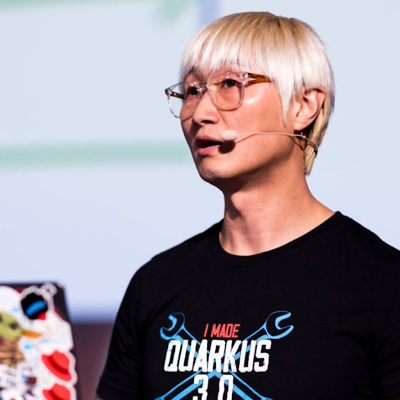
Daniel Oh
Senior Principal Developer Advocate
Boston, Massachusetts, United States
Actions
Java Champion, CNCF Ambassador & TAG DevEX Co-Chair, Developer Advocate, Technical Marketing, Keynote Speaker, Published Author
Links
Area of Expertise
Topics
Hands-on practices for Controlling Kubernetes Native Apps with Service Mesh
With the acceleration of Kubernetes adoption to shift a ton of business applications, IT Ops/SREs get higher dissatisfaction and lower retention due to unplanned downtime of the cluster as well as the application. Developers/Architects have concerns about increased unplanned downtime due to hard-to-diagnose bugs as well as "Big bang" rolling out of updates to applications can be risky due to unforeseen issues.
This hands-on lab will showcase how the Istio Service Mesh allows developers and IT staff to gain a deep understanding of their Kubernetes native applications based on Quarkus and Spring Boot, and how to take an existing application and form a service mesh around its services to obtain such understanding. Developers will also learn how to use the service mesh to provide powerful visualization and control over their distributed Kubernetes native applications.
Serverless Functions: Accelerating DevOps Adoption
Serverless functions are driving the fast adoption of DevOps development and deployment practices today. To successfully adopt serverless functions, developers must understand how serverless capabilities are specified using a combination of cloud computing, data infrastructure, and function-oriented programming. IT Ops teams also need to consider resource optimization (memory and CPU) and high-performance boot and first-response times in both development and production environments for faster time to market/service. What if we didn’t have to worry about all of that?
In this session, I’ll be speaking about what kinds of open source projects and tools enable you to write a serverless function with superfast boot and response times and built-in resource optimization. Then, you’ll understand how these capabilities take you to advanced DevOps practices as well as business acceleration. Furthermore, developers can avoid the extra work of developing a function from scratch, optimizing the application, and deploying it to Kubernetes.
Get Quarkus Funqy the next time you hit a Serverless dance floor!
No doubt to transition existing cloud-native microservices to serverless functions anytime for optimizing resources on Kubernetes but also scaling out the functions in a variety of FaaS/Serverless platforms at speed. However, each platform provides different APIs, syntax, and runtime restrictions to write a function that is not enjoyable works for serverless developers. Quarkus Funqy aims to provide portable Java APIs for developers to write a function and make it deployable on multiple Serverless platforms(i.e. AWS Lambda, Azure Functions, Google Cloud Functions, Knative Eventing). In this session, we'll walk you through how Quarkus Funqy makes you(developer) dance on the Serverless floor for fun without code changes.
Accelerating the Inner Loop Development for Kubernetes
When you move to Kubernetes and you might want to enable a GitOps/DevOps/AppOps workflow, your inner development loop becomes more complicated. For example, you will have a few more steps in your inner loop development workflow such as build a container image based on the application and dependencies, a quick sanity test with running the container image, push it to the external registry, pull that image to the remote Kubernetes cluster. You might also need to externalize some configurations by using Kubernetes features like ConfigMap, Secret. Of course, you also need to figure out how to create YAML files for creating Kubernetes manifesto or resources. In the end, it will take 2~3 times longer than traditional inner loop development without Kubernetes.
This talk with a demo showcases how developers can have the same experiences to accelerate their inner loop development from local to the remote container environment, Kubernetes using Quarkus. But IT leaders also learn the way they can help their development teams for improving Inner loop development quicker.
Jfokus 2024 Sessionize Event
JCON WORLD 2023 Sessionize Event

Daniel Oh
Senior Principal Developer Advocate
Boston, Massachusetts, United States
Links
Actions
Please note that Sessionize is not responsible for the accuracy or validity of the data provided by speakers. If you suspect this profile to be fake or spam, please let us know.
Jump to top